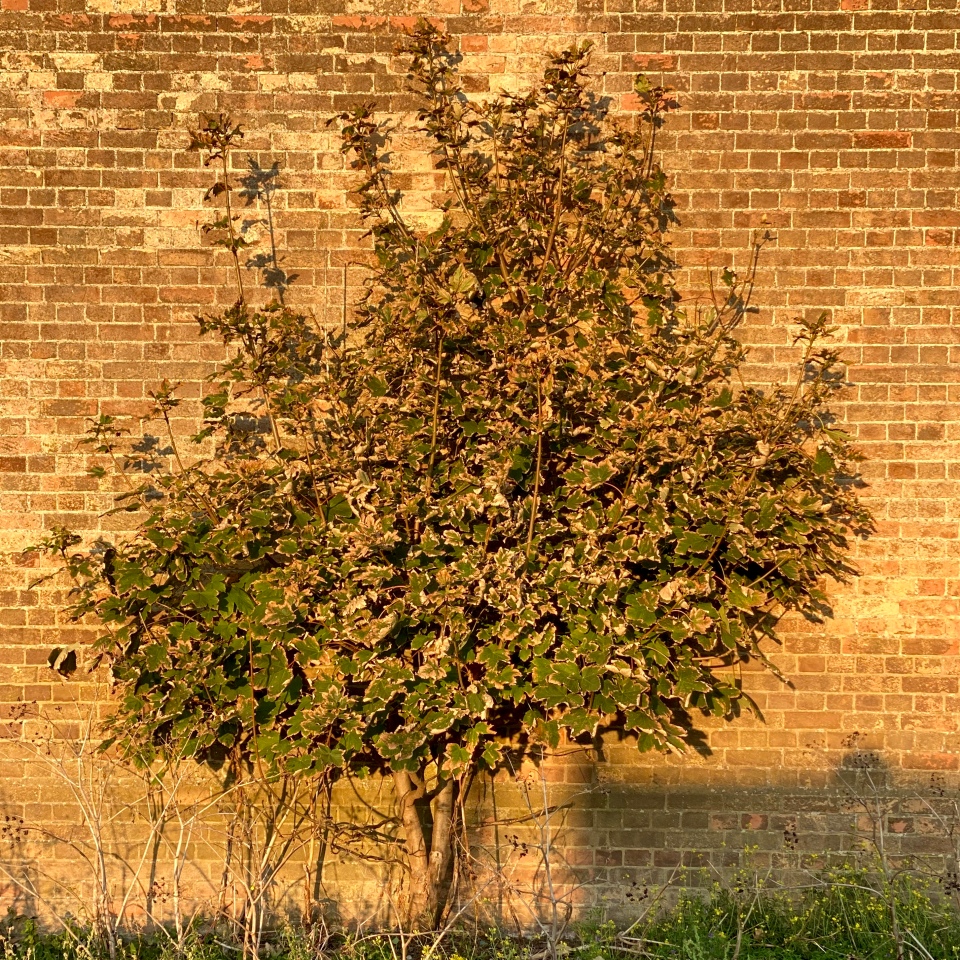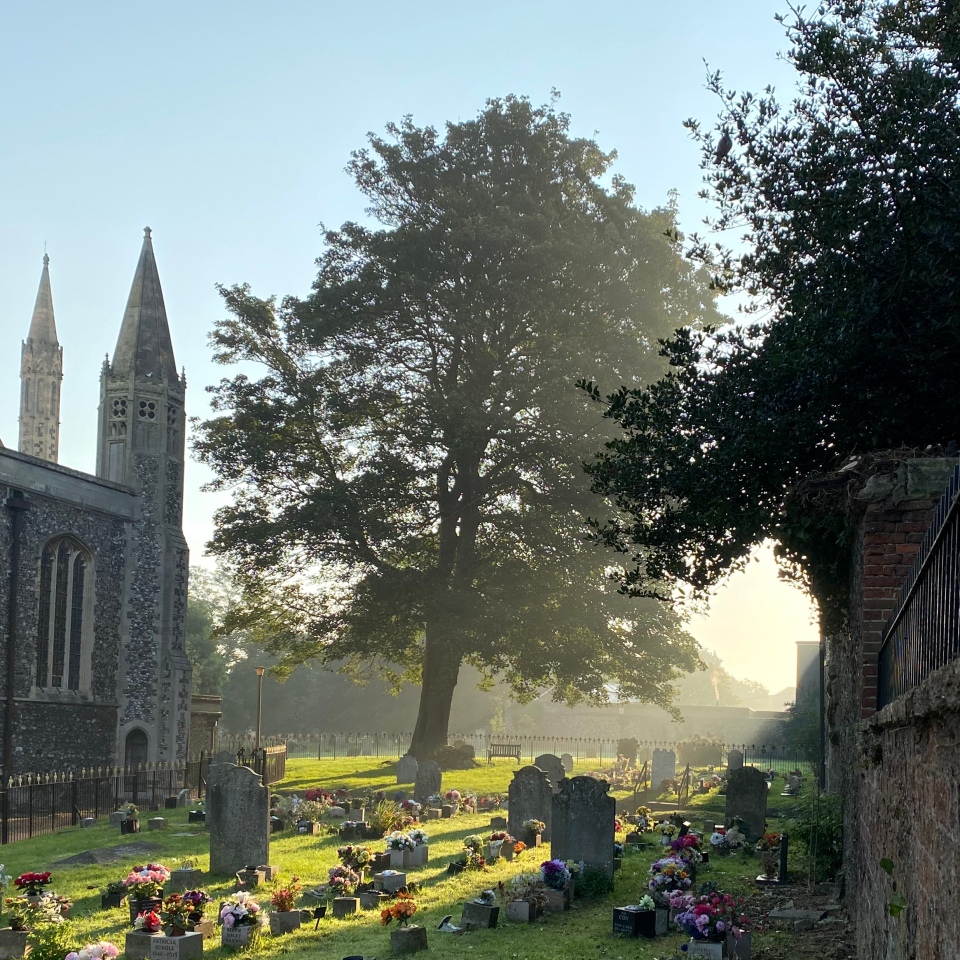The first real-world hybrid live event using the developing Lucia House online platform took place at the Fourth Portal. Four years in development, the event highlighted the challenges of merging virtual and physical spaces.
The Fourth Portal was, from the beginning, envisaged as a hybrid working and social space. A place where a person can sit at a table and meet others in the virtual and the real world. Hybrid meetings in public settings will become normalised and the experience seamless. Fourth Portal is at the cutting edge of developing such spaces. On 4th November 2022, we curated our first live test event.
Lucia House
Lucia House is a four-floor virtual home developed by the Lucia Collective in response to the first pandemic lockdown. The Lucia Collective is a loose gathering of programmers, engineers, mathematicians, philosophers and visual artists.
The Lucia Collective came together with Fourth Portal via Platform-7’s Discussion Festival events. The Discussion Festival was a weekly open-house occasion. Visitors moved about, without hindrance, between virtual tables hosted by experts on various topics. Engagement in a virtual environment is different to being in a real-world occasion. These evenings sought to observe how people interacted, moved about and communicated in virtual space when undirected. The learning feeds into the design parameters of the Fourth Portal and the online equivalent.
Open-mic poetry evening
The open-mic poetry event was on a Friday evening, hosted by Platform-7’s Bristol-based poet, Isabel White. A mixture of local poets and non-poets came along. Online were members of the Lucia Collective and other guests, including poet Andrew Duncan with his Ai nomenclature, R Andru Dunkn (a homage to Asimov robot stories).
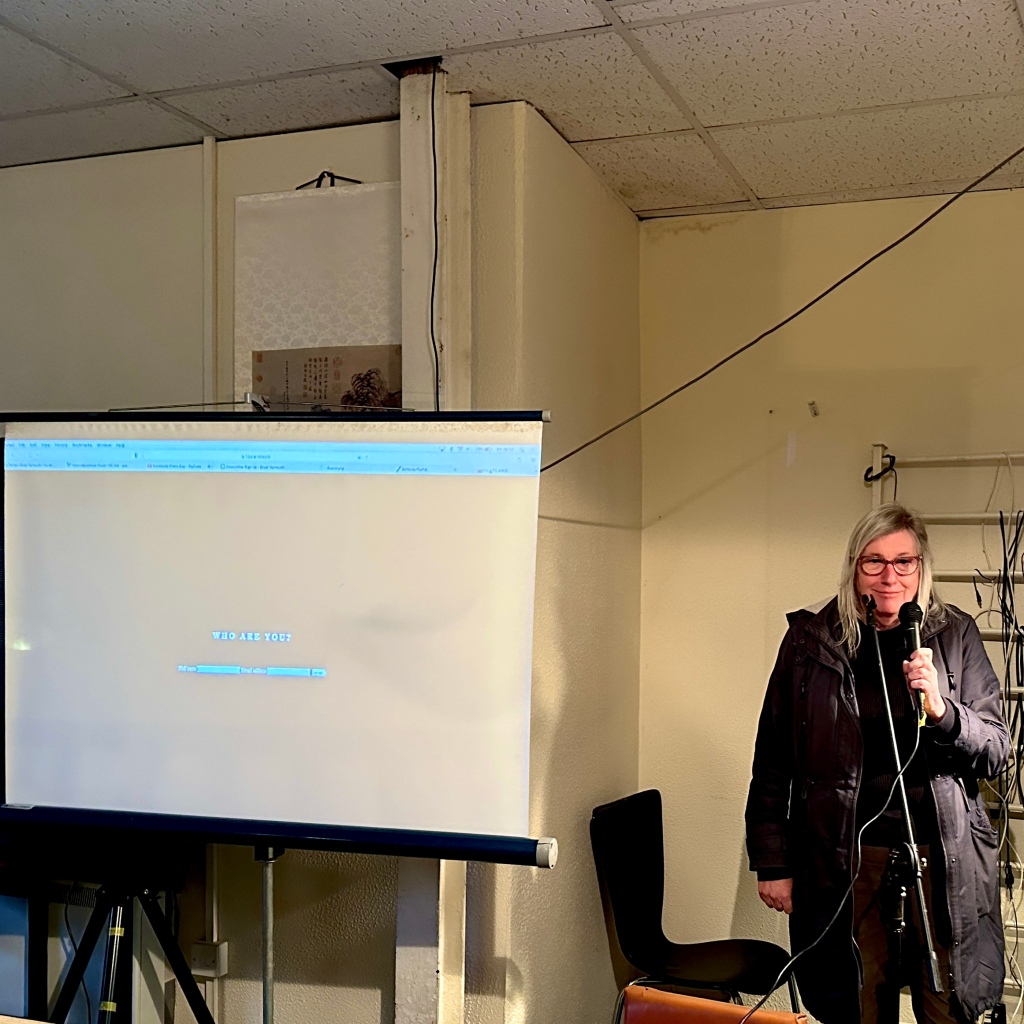
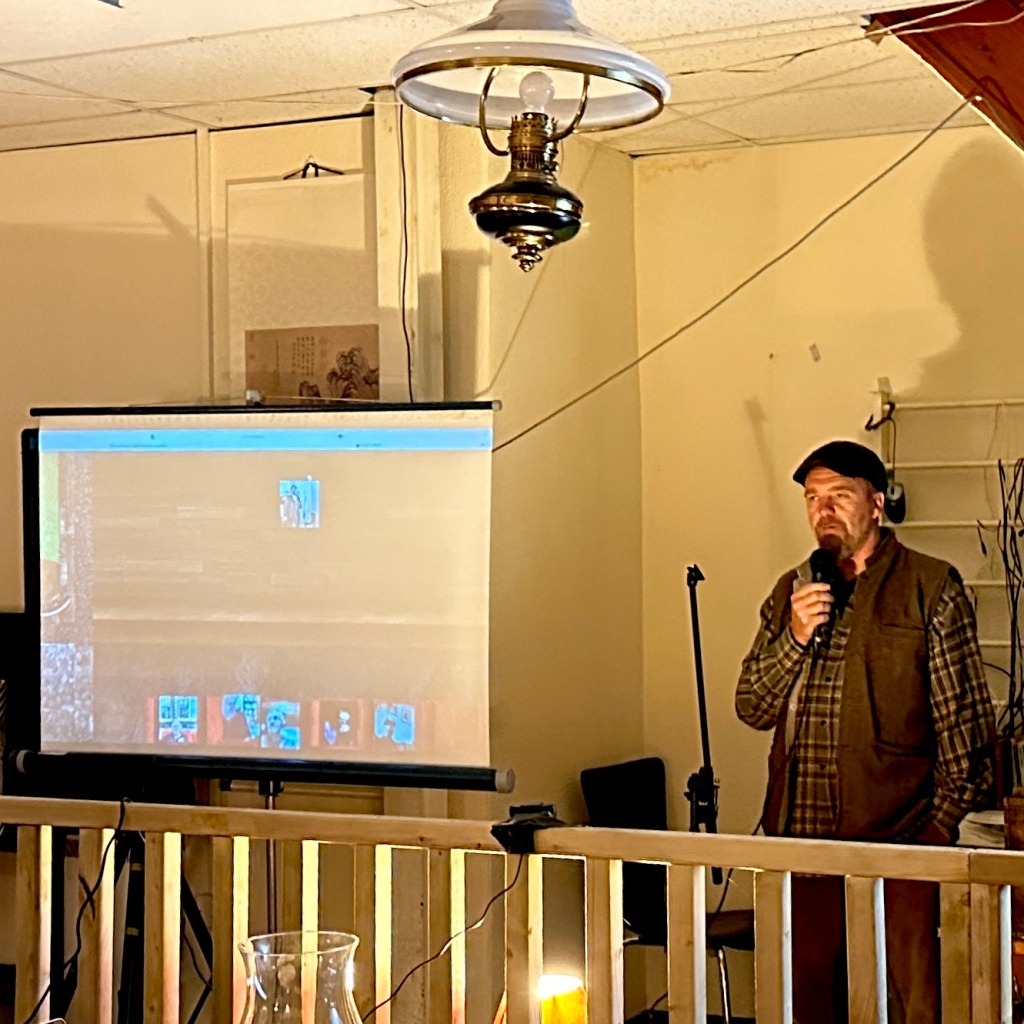
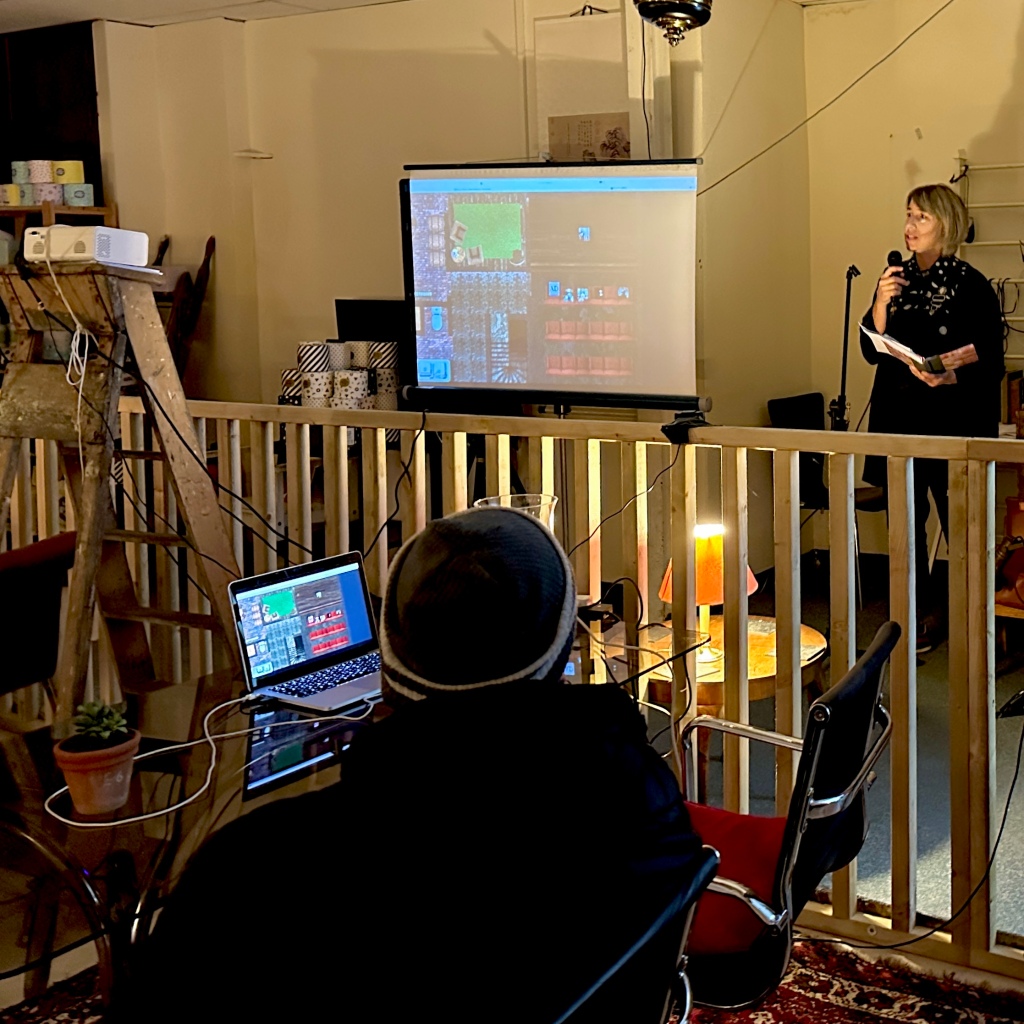
Poetry host, Isabel White and local Poets Jason Parr and Clare Currie
Lucia House’s virtual theatre beamed into the Fourth Portal via WiFi. Surround sound provided an immersive feeling inside the space. For guests in the room, the event was a new kind of experience. Although most people were familiar with Zoom, the Lucia House’s eclectic virtual furnishing and moving face tiles were unexpected.
Learning
There was no wide-angle projection of the Lucia House floorplan in the venue. This meant the layout was unclear for those in attendance to understand how the theatre was part of a much larger online environment. The Fourth Portal is awaiting the installation of a dedicated 1Gb fibre cable, leaving the event operating on a slightly erratic internet connection. Occasional weak signals caused breakdowns in the audio, leading to some chatter coming from the online guests while the real-world poets performed. The venue arrangement meant the performer could not see the online guests. In response, poets would move out of the camera shot to view the online audience, who then could not see the poet.
Facebook indetifiers
A simple website front page asked for a name and email address to gain free online entry to the event. A link was posted to Facebook and Instagram. As the event was due to go live, it became apparent that the Facebook link would not work. Post-event investigation discovered the issue; Facebook attribution parameters stop logged-in users from reaching the webpage. A solution, found via Seb’s IT blog, will be implemented for the next event.
Stop facebook attribution parameters from breaking my website
Problem Description
The affected application would return a 404 The requested URL was not found on this server message when accessed from logged in facebook users. That is because the link facebook presents to its users contains their fbclid URL parameter:
Example: https://domain.tld/adventcalendar/?fbclid=IwAR0QwiqUUrAZqv66g2y4SINDYjMZlGSZXEi6NhMXSLJqdfzoVGiWxMgfP1c
Internet connection issues aside, the online visitors who did find their way had a reasonably smooth experience. With no cameras facing the real-world audience, online guests felt denied the opportunity to feel fully involved in the real-world venue.
AI poem
In between the poetry performed by humans, the audience was treated to some poetry from an AI. Created by John K, from the Lucia Collective, the AI constructed its poetry by scanning the works of poet Alan Duncan. The poem was somewhat odd and caused unintended amusement in places, however, the audience was reasonably impressed by the poem recited. (Can an AI recite? One of the many debates yet to be had!)
R Andru Dunkn, Ai. performs reconstructed works of poet, Alan Duncan
Conclusion
The hybrid open-mic poetry night was a culmination of many years of work. The evening felt momentous for us involved in developing the Fourth Portal and Lucia House. Bringing together a real-world audience with a virtual audience was a milestone. It was all done in proper DIY style. The virtual and physical spaces are cobbled together using hanging cables, available kits and, of course, the ubiquitous old ladder.
During the first half, the poets were a little disorientated by the experience, as were some of the real-world audience. The second half was more relaxed and people became accustomed.
For the team, plenty of learning was gleaned, which will feed into the next event on 2nd December 2022.
Was the hybrid open-mic night a World’s first? Probably not! However, not many hybrid open-mic poetry nights can claim poems performed by an artificial intelligence performer.
John M
NEXT EVENT
Fourth Portal Hybrid Open-Mic Night
Friday, 2nd December 2022, 7pm – 9pm, UK time (19:00-21:00 BST)
To attend the real world event: Fourth Portal, 2 Stonecutters Way, Great Yarmouth, England, NR30 1HF
To attend virtually: https://lucia.network
ALL WELCOME | FREE ENTRY




































































































































